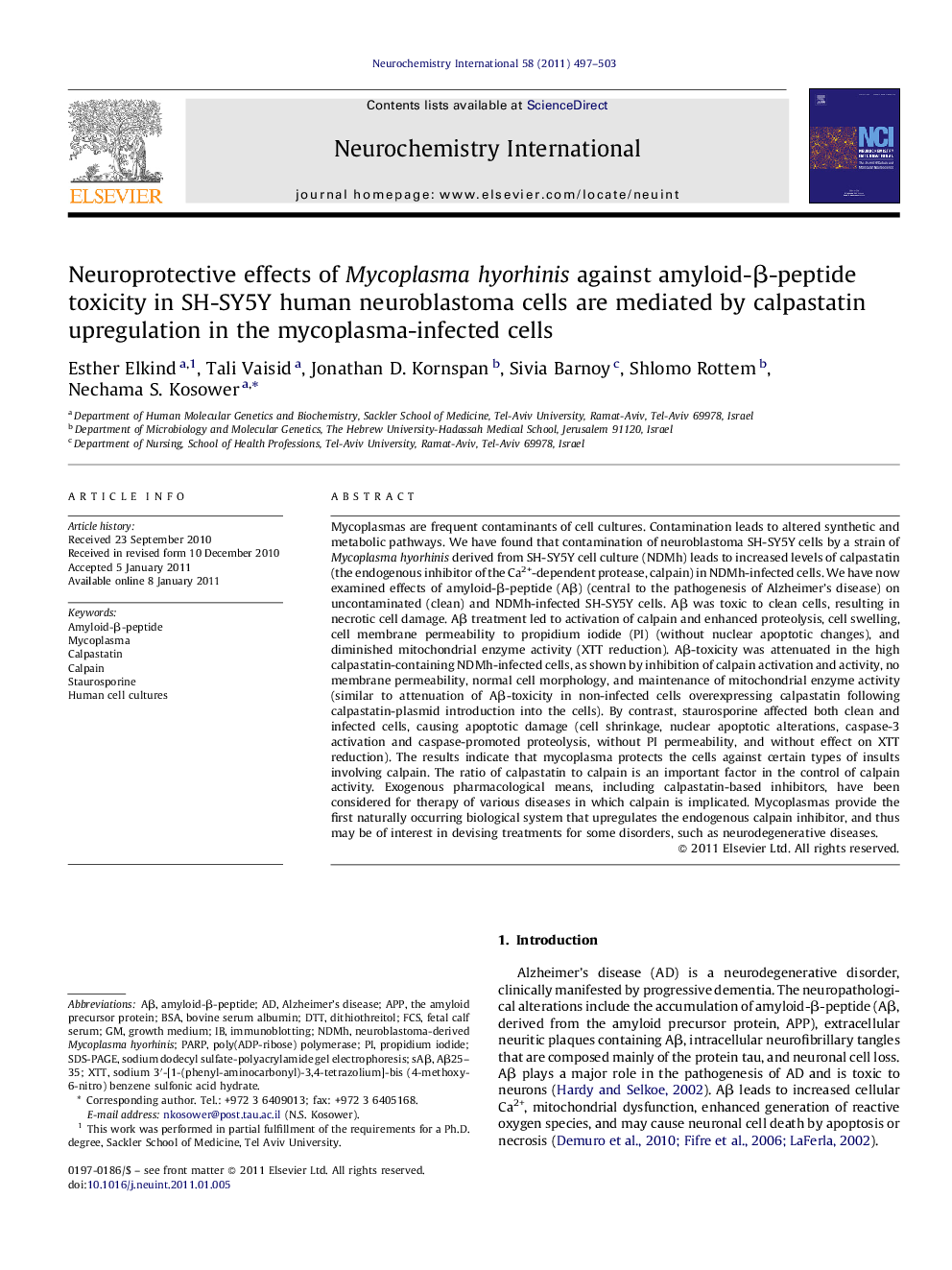| کد مقاله | کد نشریه | سال انتشار | مقاله انگلیسی | نسخه تمام متن |
|---|---|---|---|---|
| 2201270 | 1100008 | 2011 | 7 صفحه PDF | دانلود رایگان |

Mycoplasmas are frequent contaminants of cell cultures. Contamination leads to altered synthetic and metabolic pathways. We have found that contamination of neuroblastoma SH-SY5Y cells by a strain of Mycoplasma hyorhinis derived from SH-SY5Y cell culture (NDMh) leads to increased levels of calpastatin (the endogenous inhibitor of the Ca2+-dependent protease, calpain) in NDMh-infected cells. We have now examined effects of amyloid-β-peptide (Aβ) (central to the pathogenesis of Alzheimer's disease) on uncontaminated (clean) and NDMh-infected SH-SY5Y cells. Aβ was toxic to clean cells, resulting in necrotic cell damage. Aβ treatment led to activation of calpain and enhanced proteolysis, cell swelling, cell membrane permeability to propidium iodide (PI) (without nuclear apoptotic changes), and diminished mitochondrial enzyme activity (XTT reduction). Aβ-toxicity was attenuated in the high calpastatin-containing NDMh-infected cells, as shown by inhibition of calpain activation and activity, no membrane permeability, normal cell morphology, and maintenance of mitochondrial enzyme activity (similar to attenuation of Aβ-toxicity in non-infected cells overexpressing calpastatin following calpastatin-plasmid introduction into the cells). By contrast, staurosporine affected both clean and infected cells, causing apoptotic damage (cell shrinkage, nuclear apoptotic alterations, caspase-3 activation and caspase-promoted proteolysis, without PI permeability, and without effect on XTT reduction). The results indicate that mycoplasma protects the cells against certain types of insults involving calpain. The ratio of calpastatin to calpain is an important factor in the control of calpain activity. Exogenous pharmacological means, including calpastatin-based inhibitors, have been considered for therapy of various diseases in which calpain is implicated. Mycoplasmas provide the first naturally occurring biological system that upregulates the endogenous calpain inhibitor, and thus may be of interest in devising treatments for some disorders, such as neurodegenerative diseases.
Research highlights▶ Mycoplasma hyorhinis raises calpastatin levels in host cells. ▶ Increased calpastatin protects the cells against Aβ toxicity. ▶ Mycoplasma protects the cells against certain types of insults, but not all. ▶ Increased calpastatin in mycoplasma-infected cells may be responsible for suddenly altered behavior of cultured cells. ▶ Mycoplasmas might be of interest in devising treatments for some disorders.
Journal: Neurochemistry International - Volume 58, Issue 4, March 2011, Pages 497–503